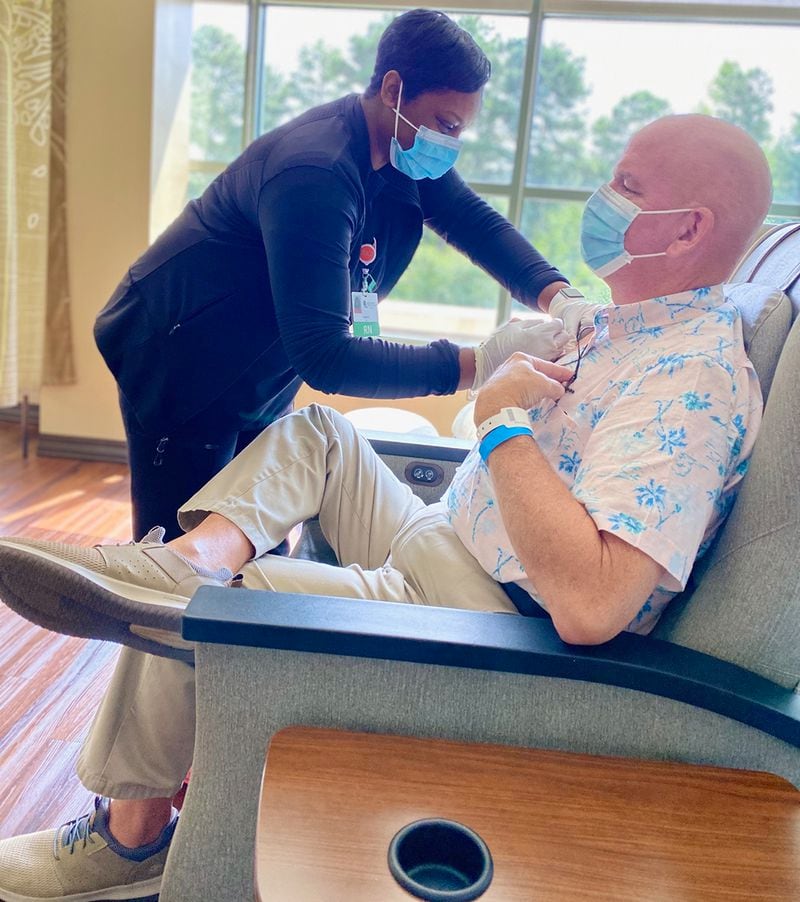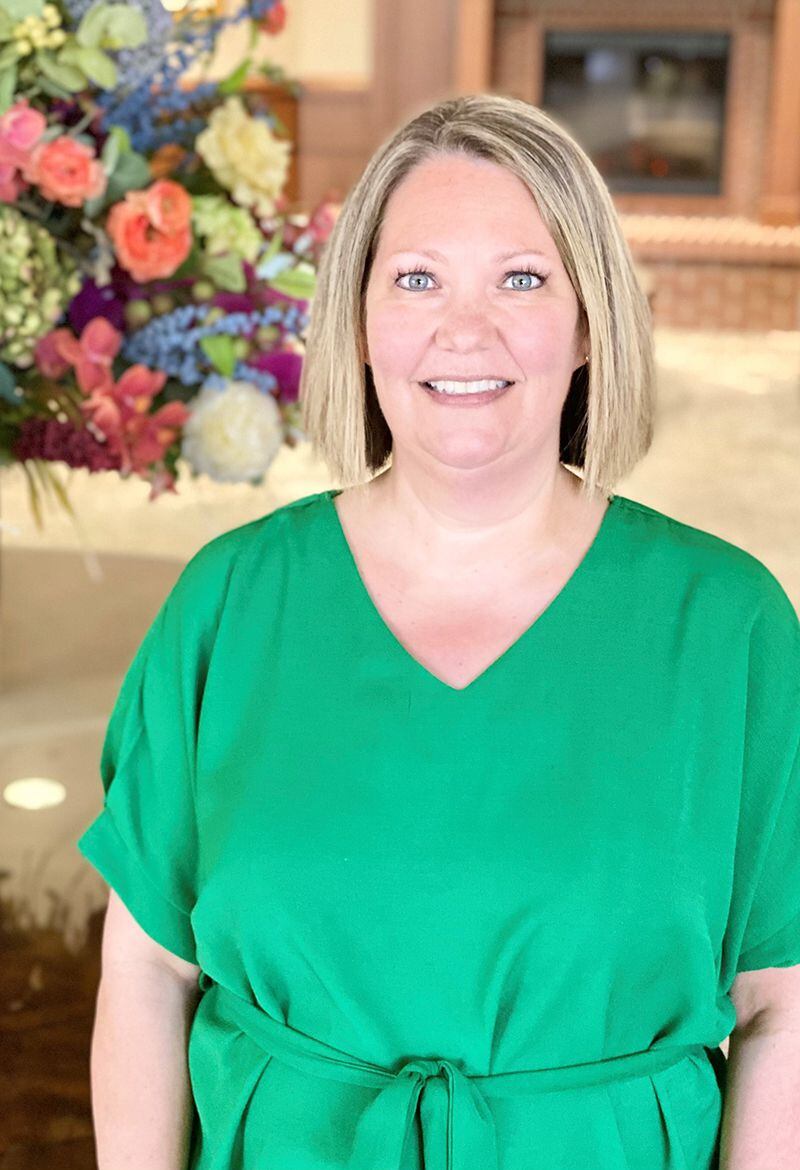 Credit: Photo courtesy of Cancer Treatment Centers of America
Credit: Photo courtesy of Cancer Treatment Centers of America
By Andrea Clement, For the AJC
Magnet recognition requires time, talent and perseverance, and nurses say it’s worth it
Whether you’re a patient choosing a medical facility, or a health care worker seeking employment, quality of care is likely a top priority affecting your decision. How can you confirm a facility’s quality of care, though? A plethora of information is available online, including physician reviews, patient reviews, hospital rankings and more.
For nurses seeking employment, as well as for patients seeking medical care, another key benchmark to consider is the Magnet Recognition Program, developed by the American Nurses Association several decades ago to recognize quality patient care, nursing excellence and innovative professional nursing practice. In 1994, the University of Washington Medical Center in Seattle became the first hospital in the country to achieve magnet certification. Since then, more than 550 hospitals and long-term care facilities have joined them worldwide. Currently, about 8% of all hospitals and health facilities are magnet certified.
ExplorePulse: a digital magazine for nurses in the Southeast

Credit: Photo courtesy of Cancer Treatment Centers of America
What is the Magnet Recognition Program?
According to the ANA’s website, the Magnet Recognition Program is more than an award — it’s “steadfast proof of a hard-earned commitment to excellence in health care, with contented nurses at its heart.” The program was designed to “provide a roadmap to nursing excellence, which benefits the whole of an organization.” It aligns nurse leadership and health care strategies to achieve better patient outcomes, decrease burnout among the nursing staff, and increase job satisfaction among nurses, which in turn reduces turnover on the nursing staff, according to studies cited on the ANA website. Furthermore, these measures positively affect the hospital’s financial bottom line.
In Georgia, there are 12 magnet facilities, including several in the metropolitan Atlanta area, plus one each in Macon, Augusta and Newnan, and two in the Savannah area. One of the most recent certifications in Georgia was achieved this year by the Cancer Treatment Centers of America, a national oncology network of hospitals and outpatient centers.
“This milestone is the result of a dedicated, purpose-filled nursing team who embarked on a journey,” said Regina Brigman-Lake, MSN, RN, vice president of patient care services and chief nursing officer of CTCA Atlanta. “I am incredibly proud of the individual contributions and collective effort that not only led to Magnet recognition, but also to achieving 14 exemplars — a concept, practice or program worthy of imitation.”

Credit: Photo courtesy of Cancer Treatment Centers of America
ExploreNICU nurse cares for critically ill babies while calming parents’ fears
Brigman-Lake explained that the CTCA team’s journey to obtaining magnet status began just 3½ years after their hospital opened in Atlanta. “We have a wonderful place to work — a place that takes excellent care of patients — and our team is always working to make things better,” she said.
Since they felt they were already meeting the magnet standards, it made sense for them to start documenting their qualifications and working toward recognition. Completing the process during a pandemic presented additional challenges, Brigman-Lake said, but her team at CTCA was undeterred. “Throughout the process, we faced unprecedented changes for a new hospital like ours, so it became more of a challenge, one we refused to fail.”
The process of obtaining magnet recognition takes about four years, and involves everyone in the organization, according to Brigman-Lake, with “intense focus on front-line nurses and their collaboration with others across the hospital.”
According to the ANA, studies comparing hospital care in magnet certified facilities vs. non-magnet have shown more favorable finding for magnet facilities in patient safety and patient outcomes, including infection rates, fall rates and readmission rates.
“We hope that this designation will further differentiate CTCA Atlanta as a specialty hospital committed to high-quality patient care delivered by a highly capable, compassionate staff,” Brigman-Lake said. “Magnet facilities have higher nurse retention rates, which is a major focus for us. We have high-caliber talent we want to retain, and high-caliber candidates we want to attract.”
ExploreThis lucrative advanced practice nursing career is a real ‘gas’
Hospital staff should expect to invest an extensive amount of time into the process of achieving magnet recognition. “The time commitment for leaders and front-line staff is tremendous, but like anything worthwhile, it is worth the effort,” Brigman-Lake added. With the magnet recognition being a four-year designation, CTCA will be up for renewal in 2025, she said. “Basically, the work never stops — nor does our commitment to nursing excellence.”
She said her team did not initially realize how much time would be required from clinical and administrative leaders, as well as front-line staff. Therefore, if your team is considering applying for magnet status, she recommended establishing strong nursing councils.
“The (magnet) journey solidified our nursing councils, whose work never ceases to amaze me. They are powerhouses behind our reputation for clinical excellence. As we maneuvered challenging times in health care and a pandemic, we found this journey was truly the glue that held us together; the common goal everyone — not just our nursing team — pursued until a successful end,” she added.
For the nursing team, achieving magnet recognition is a source of great pride. “It’s a huge deal and a badge of honor for us and our hospital … We are proud of reaching the peak of the magnet mountain, and most proud of the long climb it took to get there,” Brigman-Lake concluded.
Ultimately, the process of obtaining magnet recognition will fortify an already strong nursing team and confirm what the staff is doing right, as well as help to streamline any areas that need improvement. It helps nurses to be more effective and efficient, providing a high standard of care. This leads to increased job satisfaction, according to the ANA, which has found that nurses at magnet facilities experience less burnout than nurses at non-magnet facilities.
ExplorePandemic drives increased demand for nurses in behavioral health

Credit: Photo courtesy of Cancer Treatment Centers of America
Kristin Bowman, MSN, RN, NPD-BC served as the magnet program director for CTCA, helping to oversee the process of achieving recognition. As such, she, too, is especially proud of the CTCA team for achieving this designation.
“Magnet recognition is the gold standard in nursing practice. It is synonymous with delivery of high-quality care and safety, innovation in practice, growth in professionalism and overall nursing excellence — each of these areas is critical to the patient experience,” she said.
For those interested in starting the magnet accreditation process, obtaining care from a magnet facility or finding an employer that is magnet certified, the ANA’s website includes a comprehensive overview of the Magnet Recognition Program, along with a search function to locate magnet facilities in your area.
Find the original article HERE
